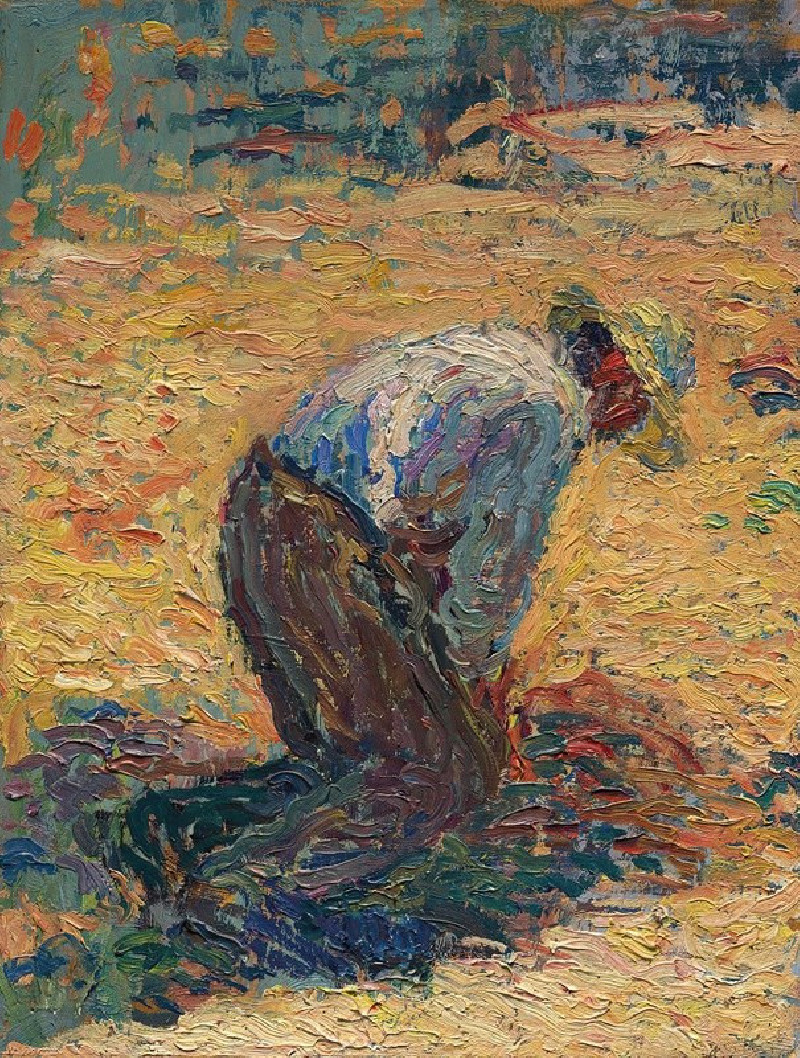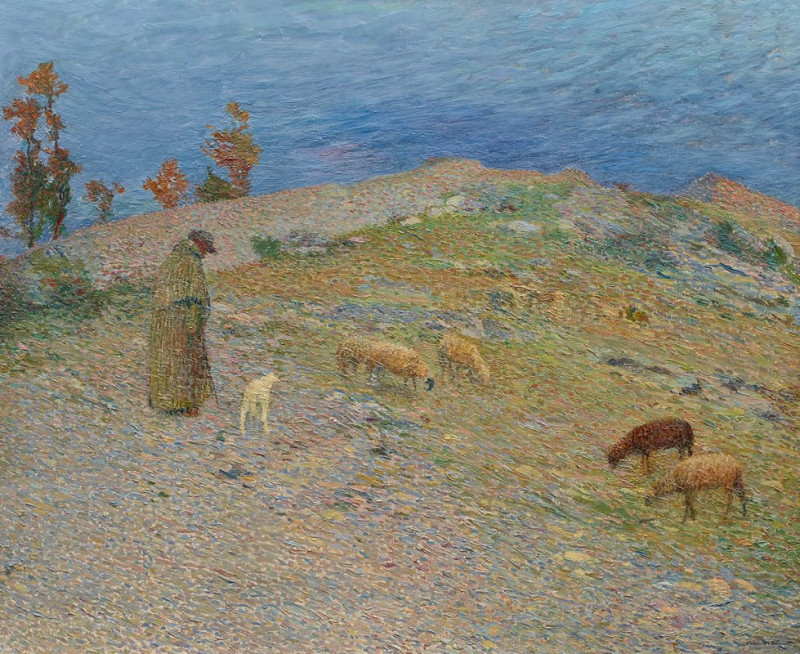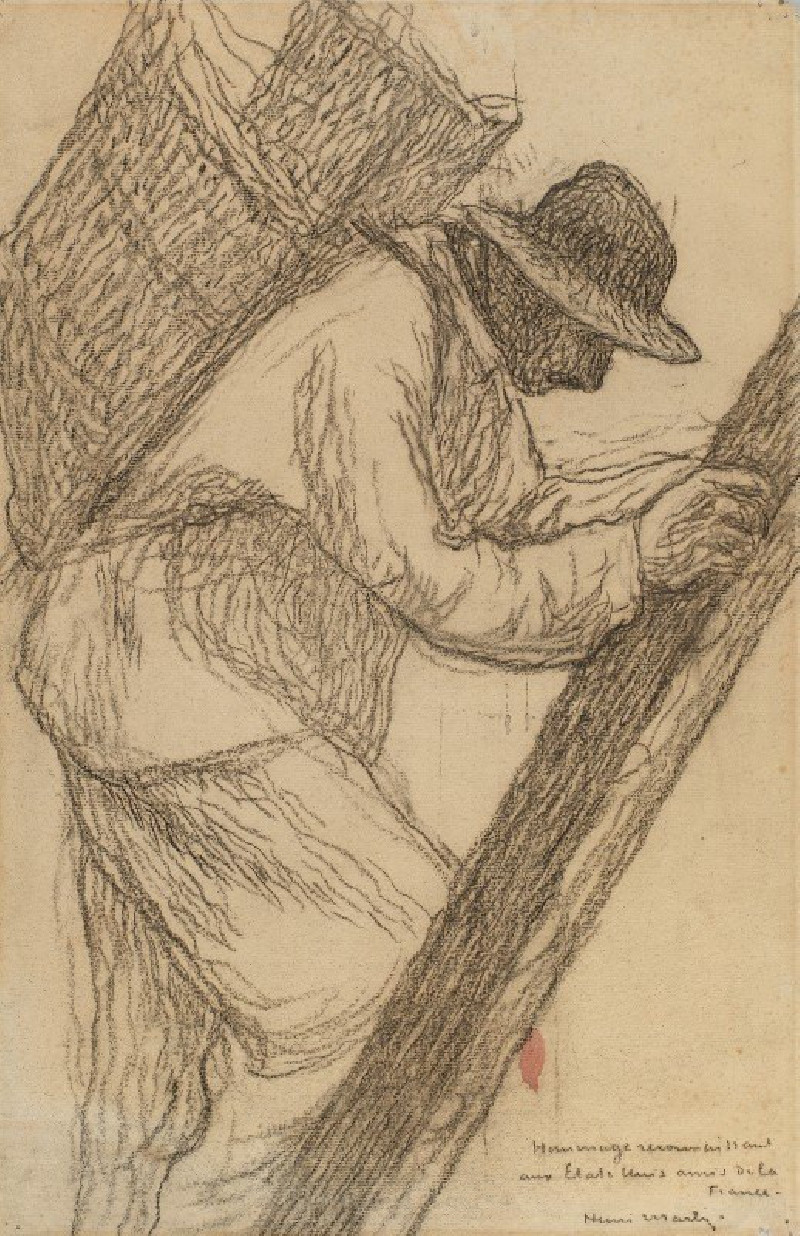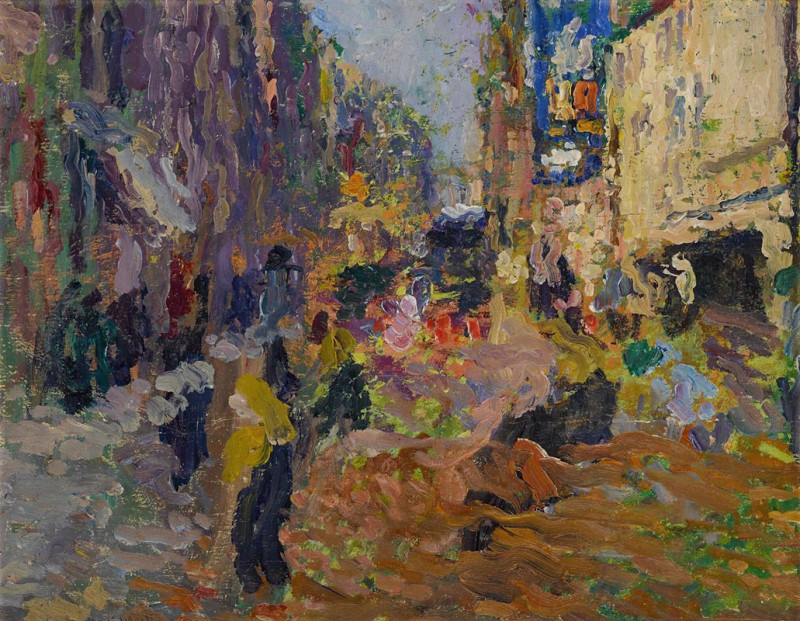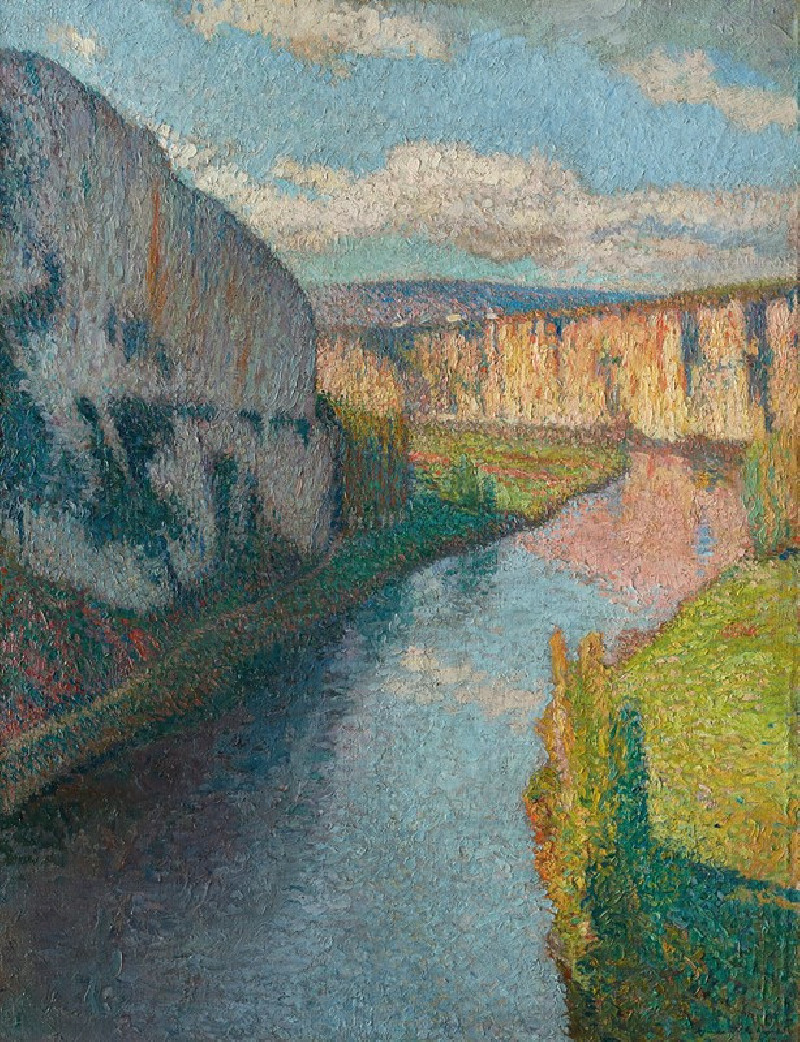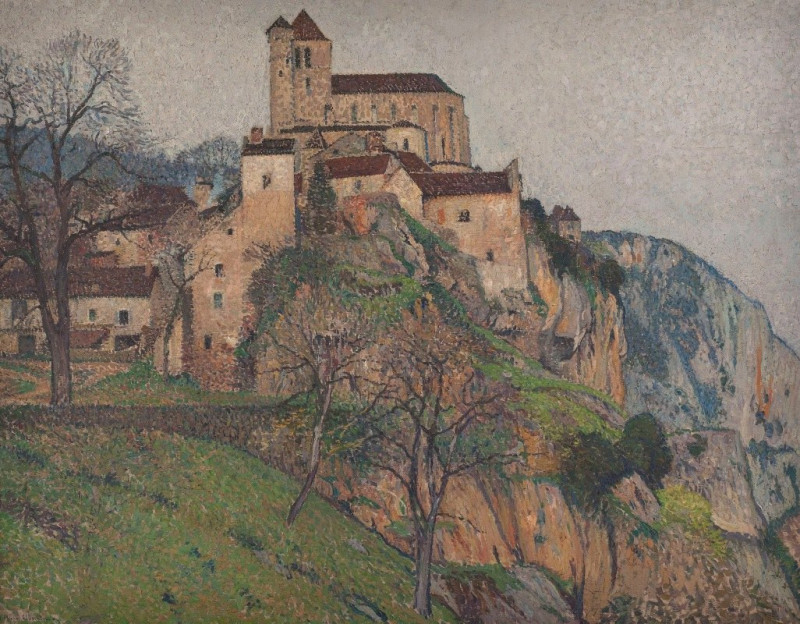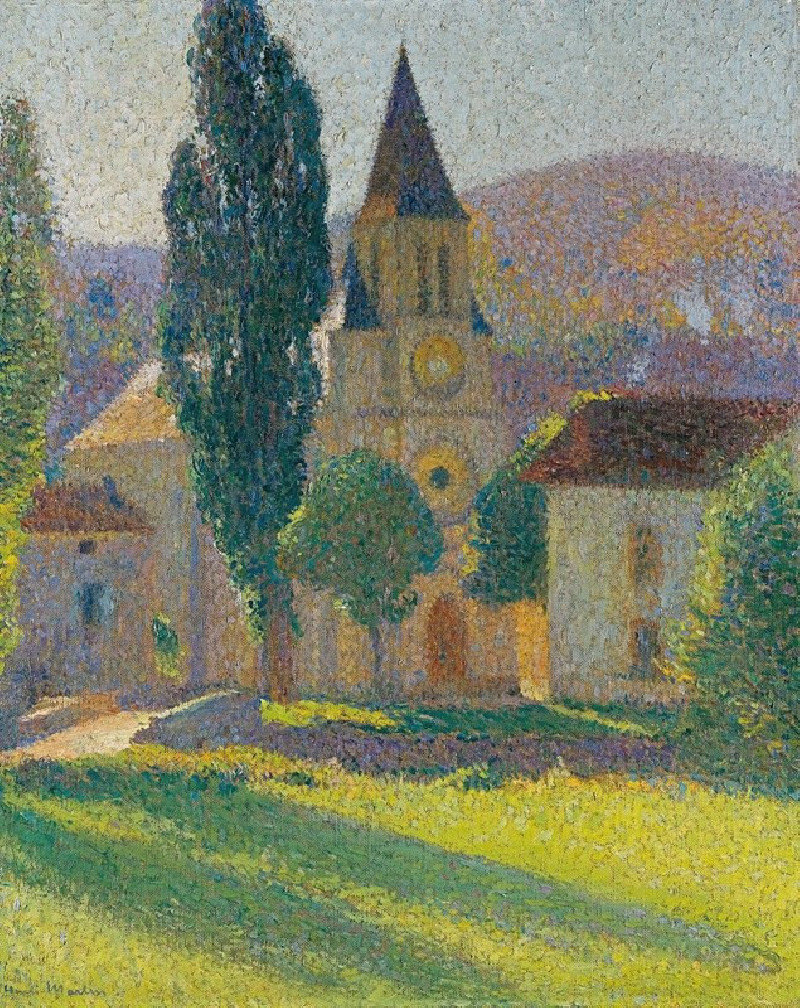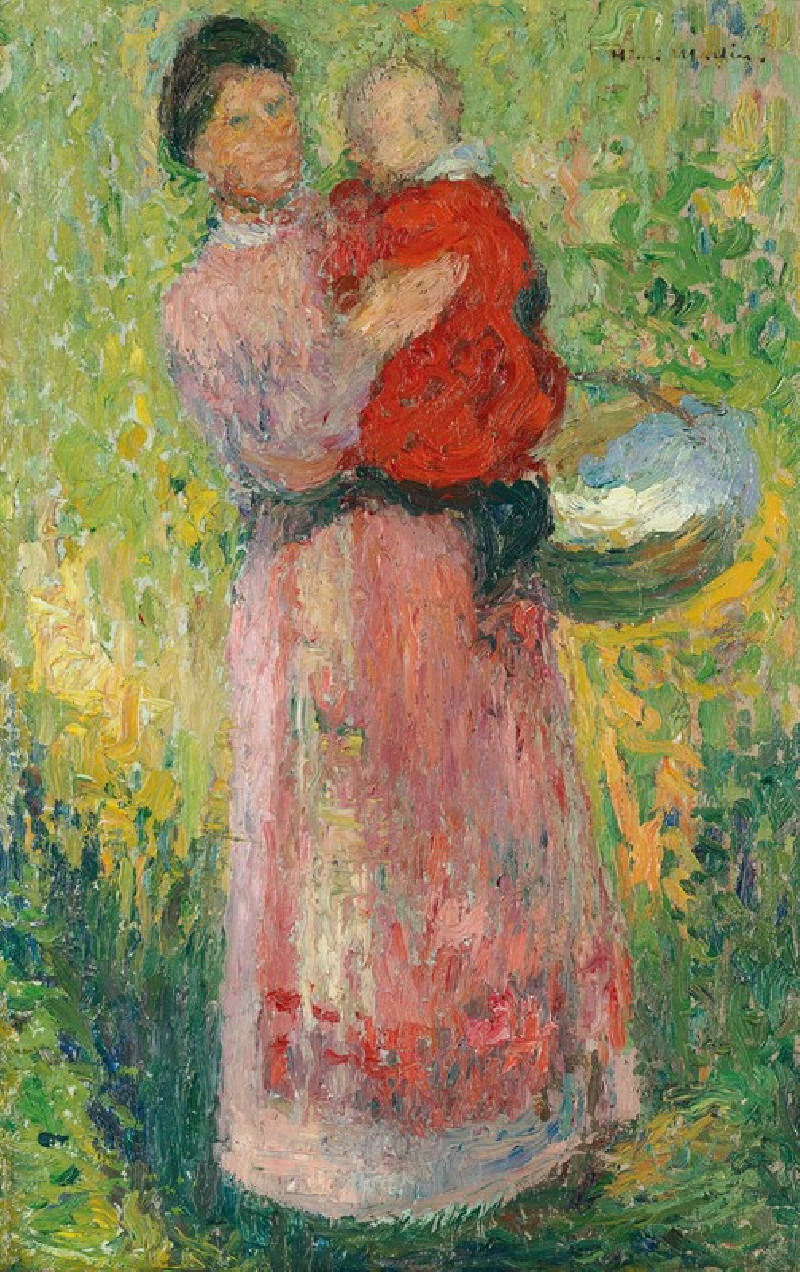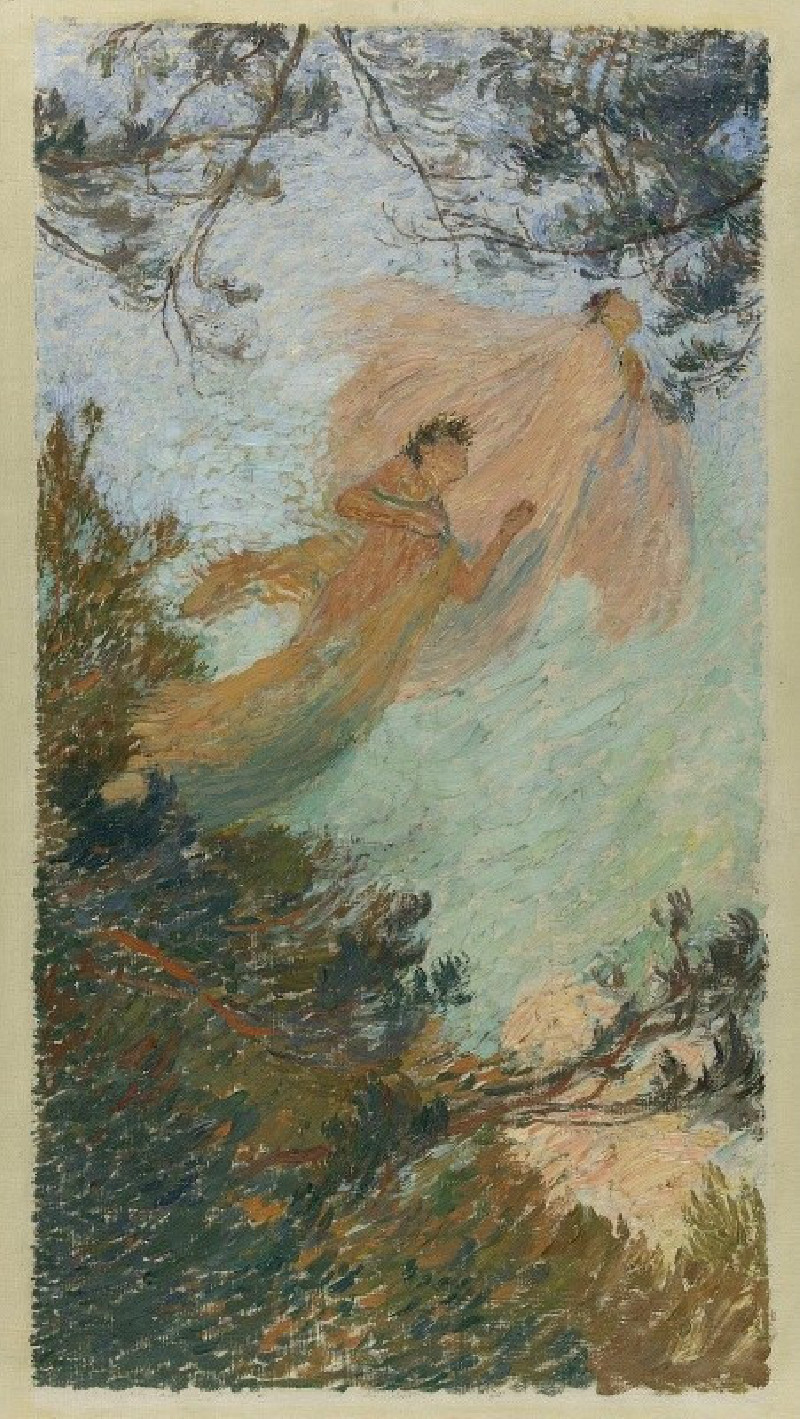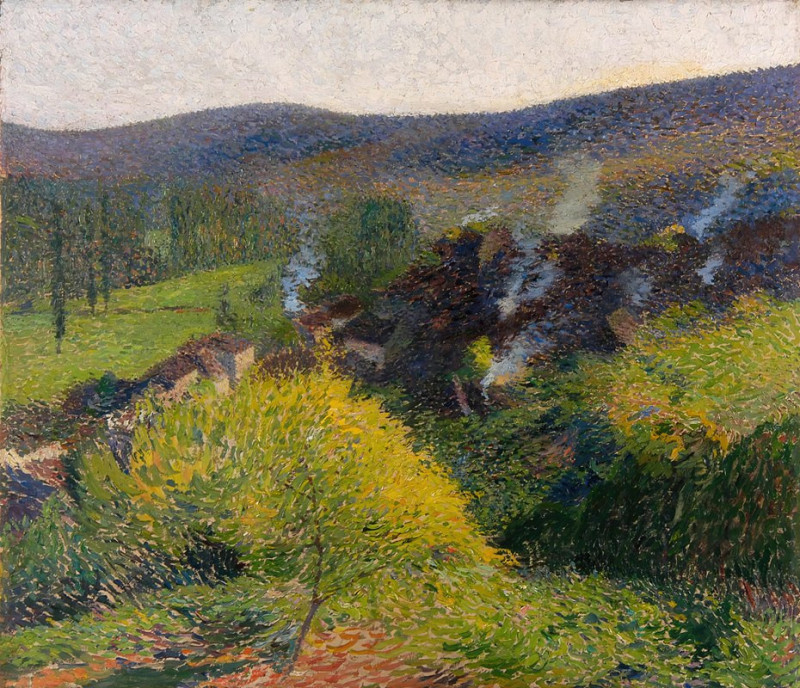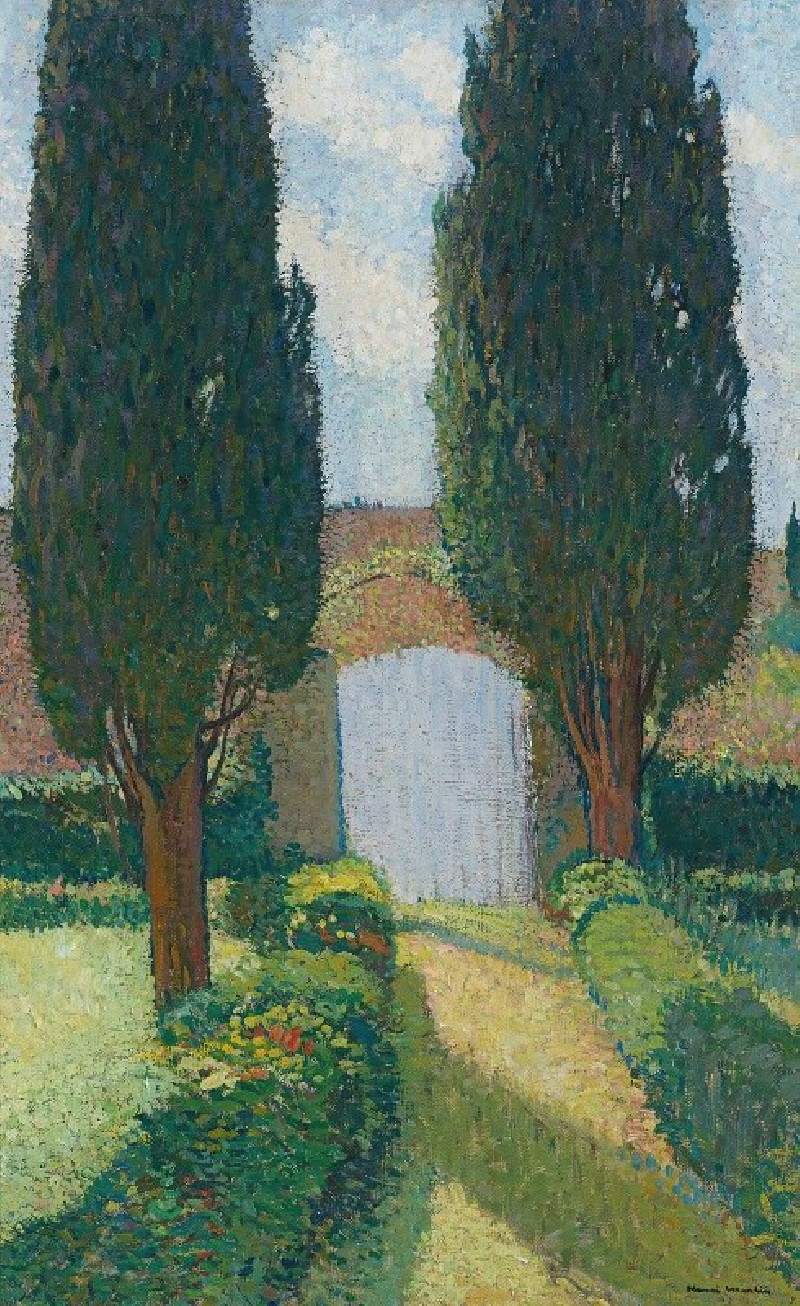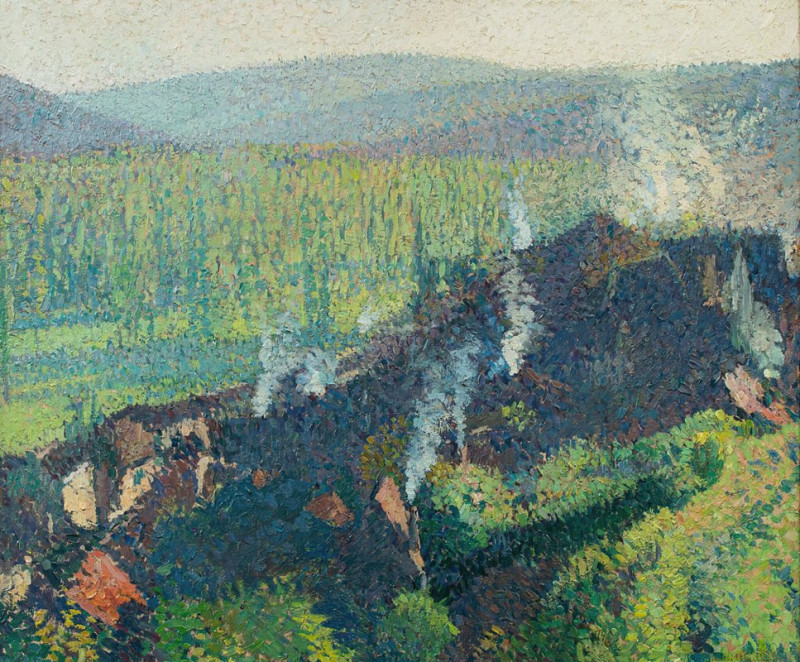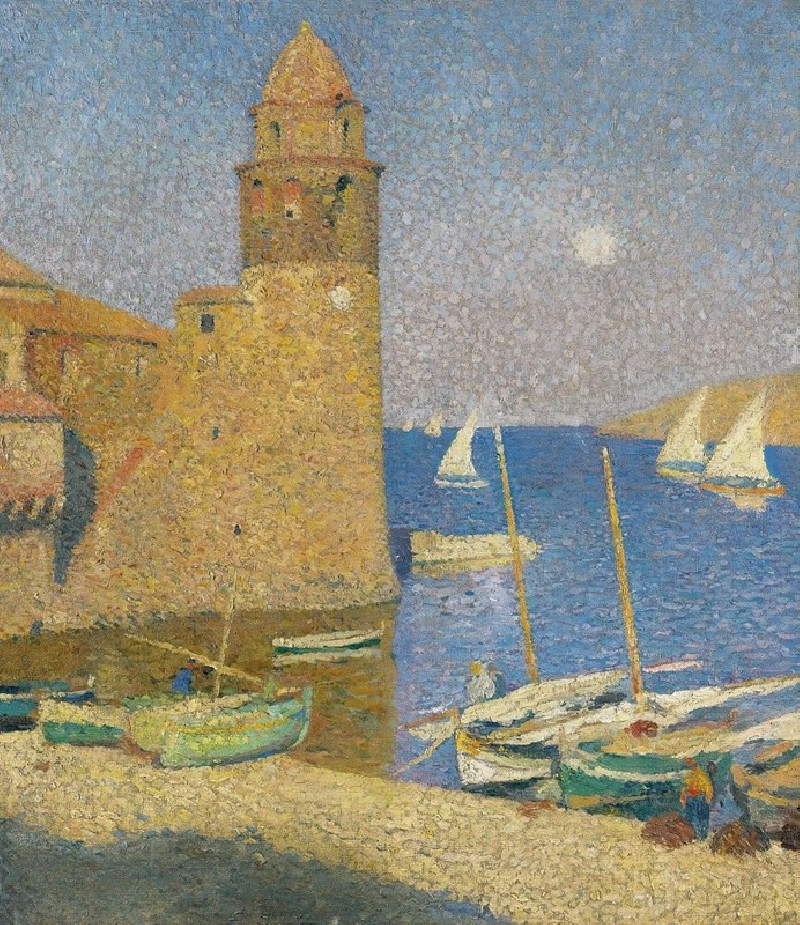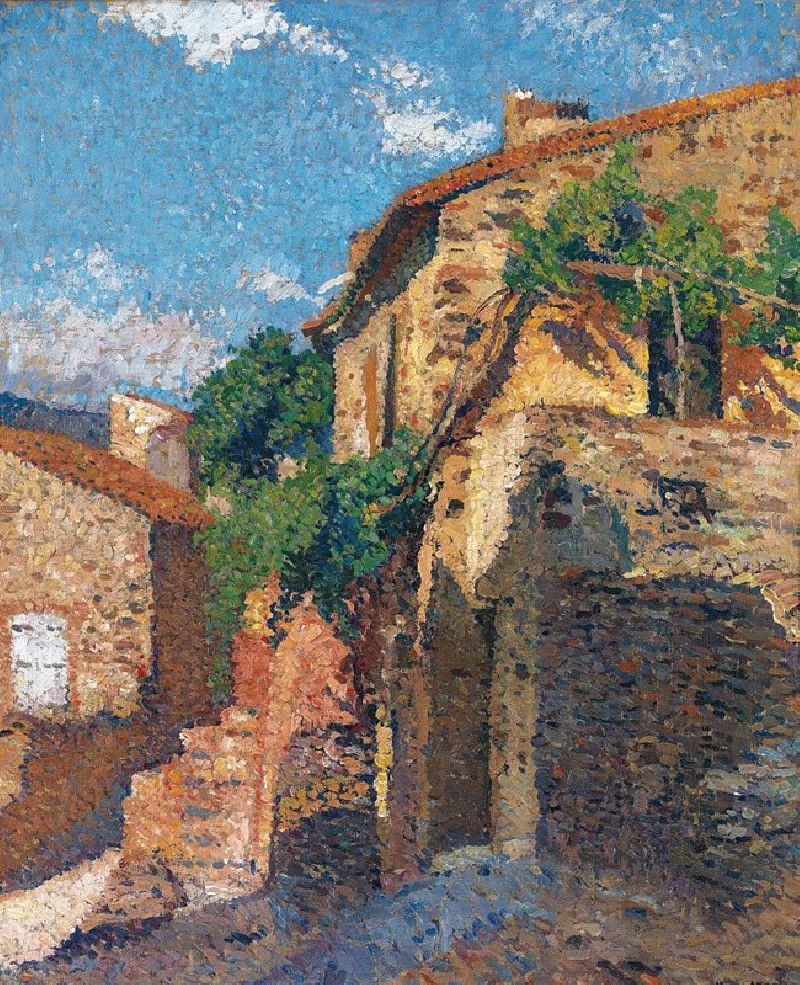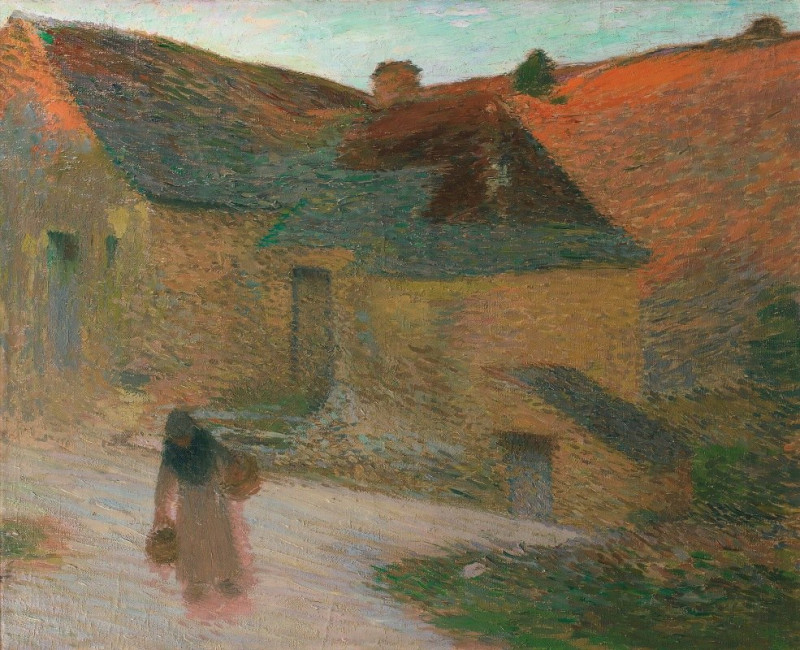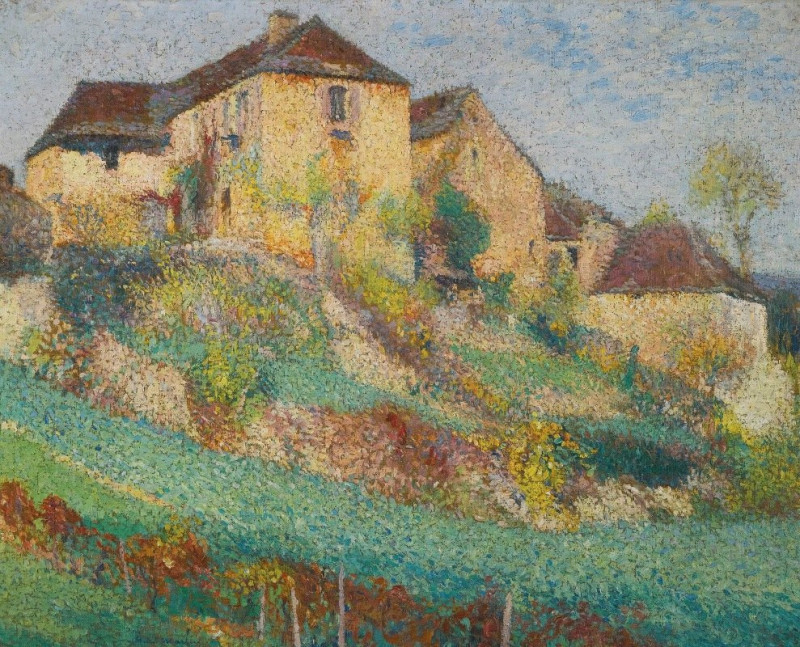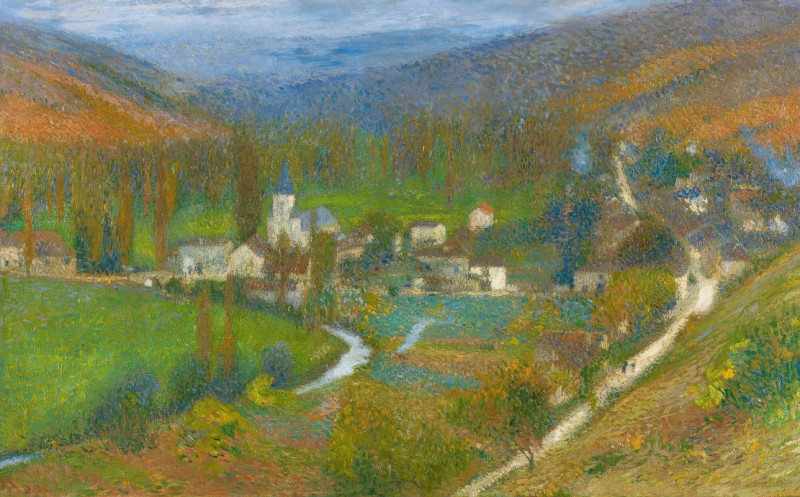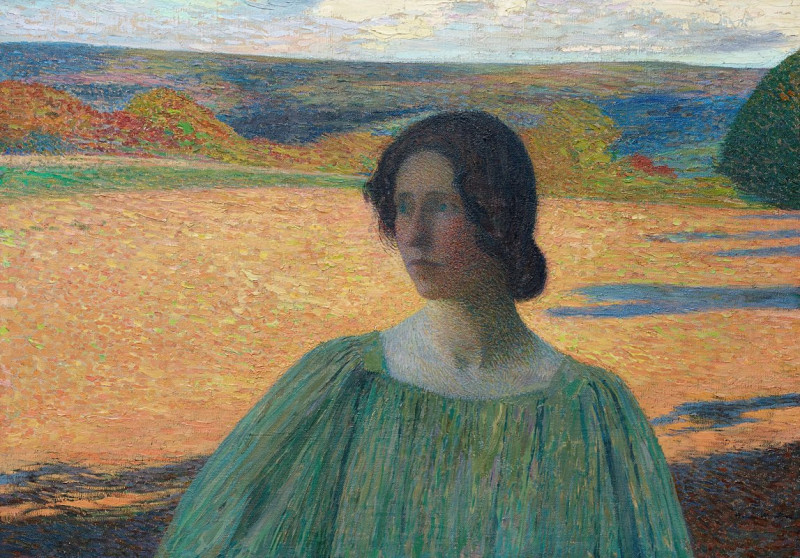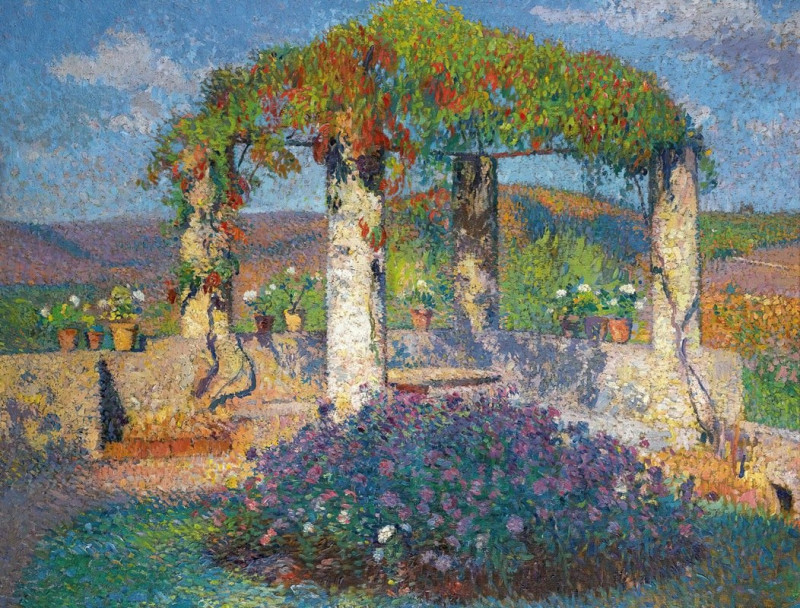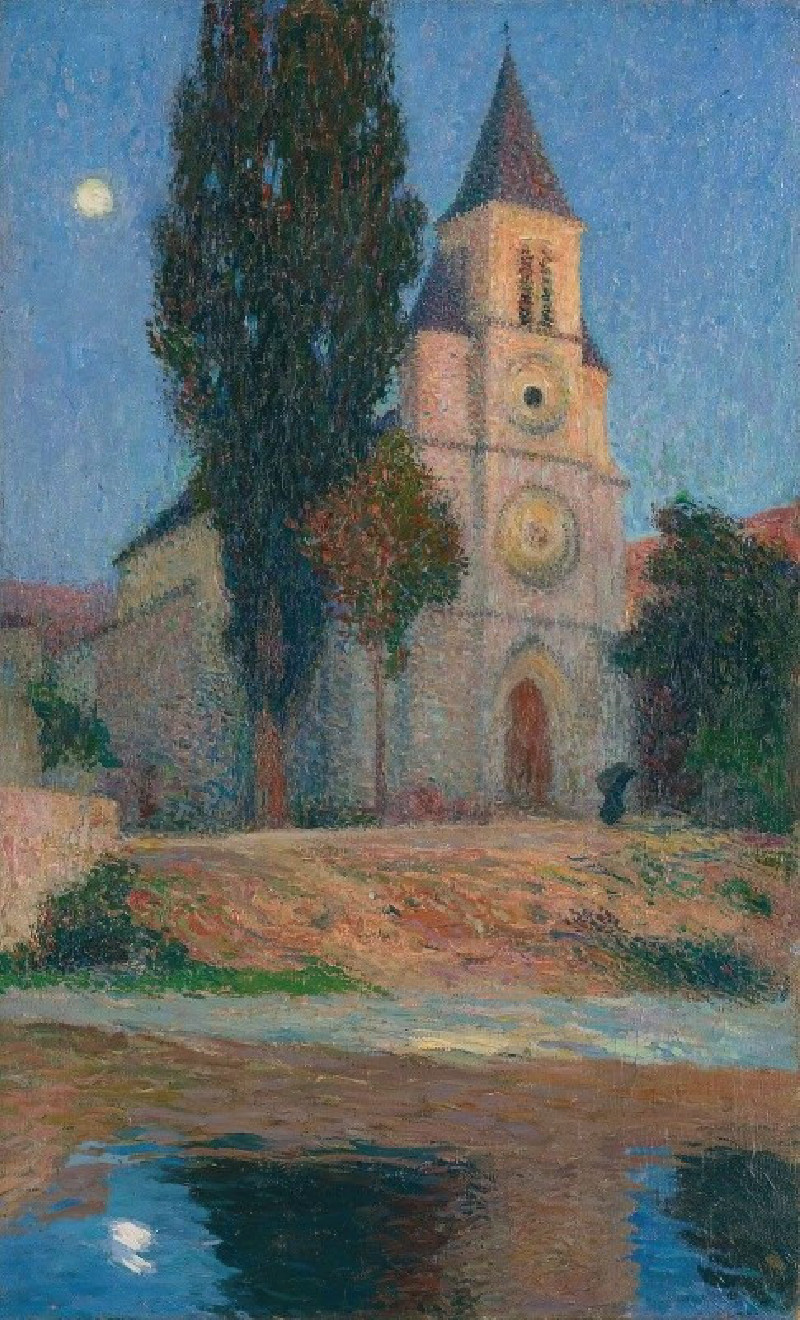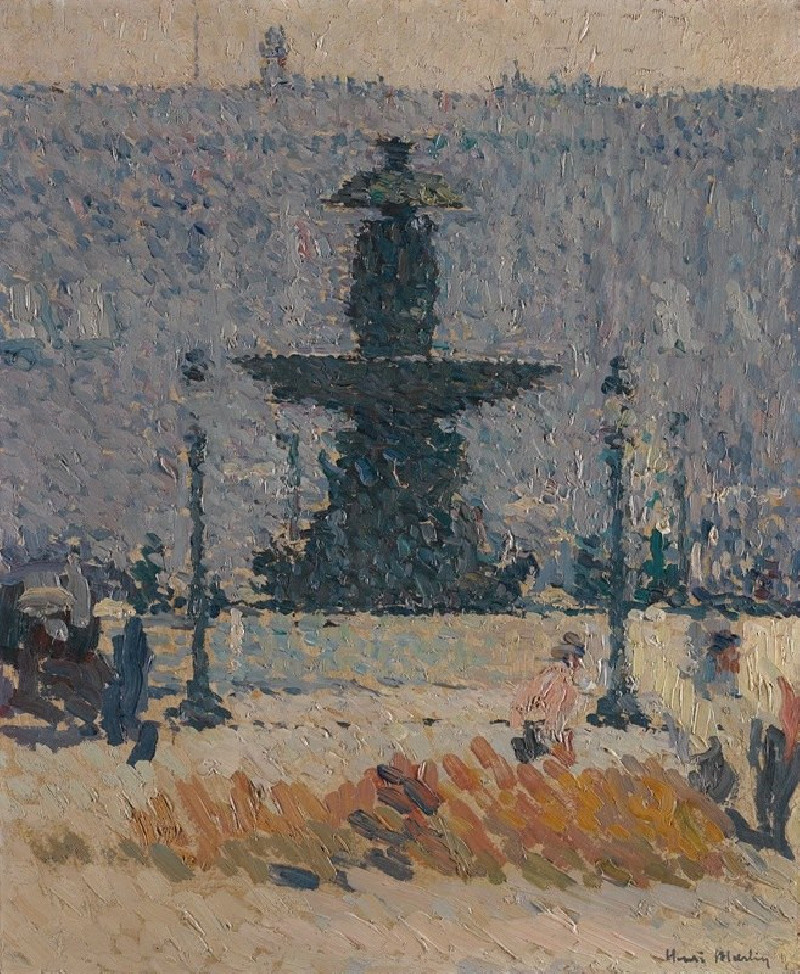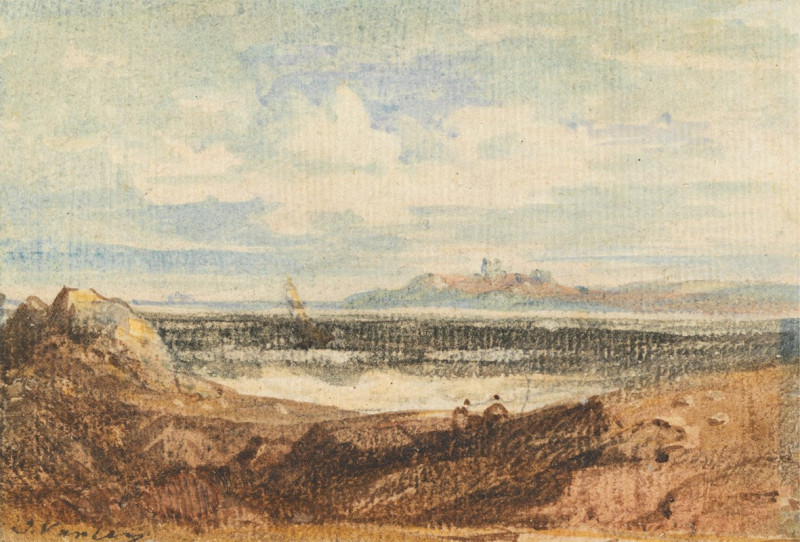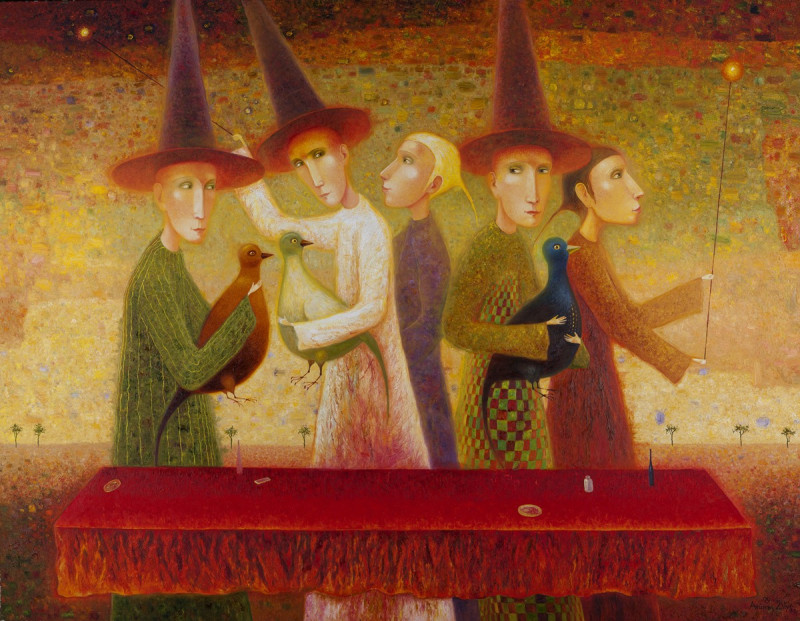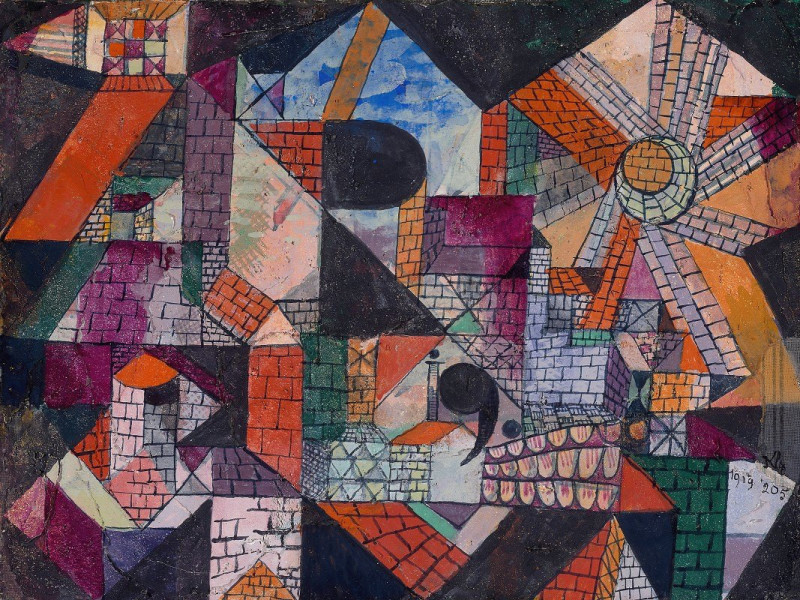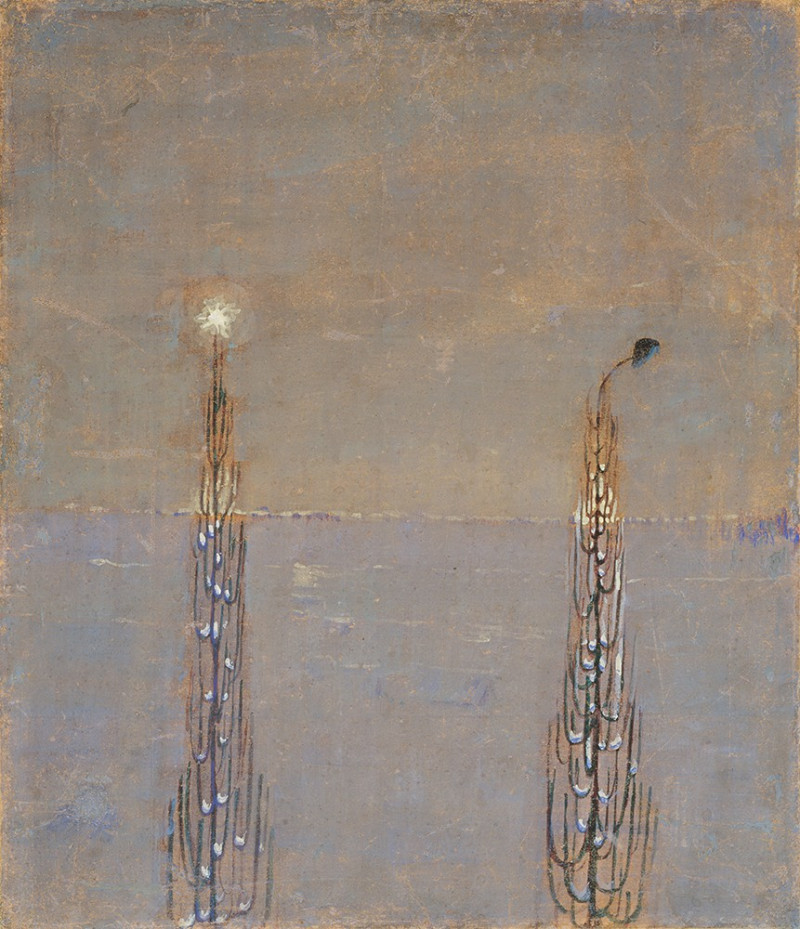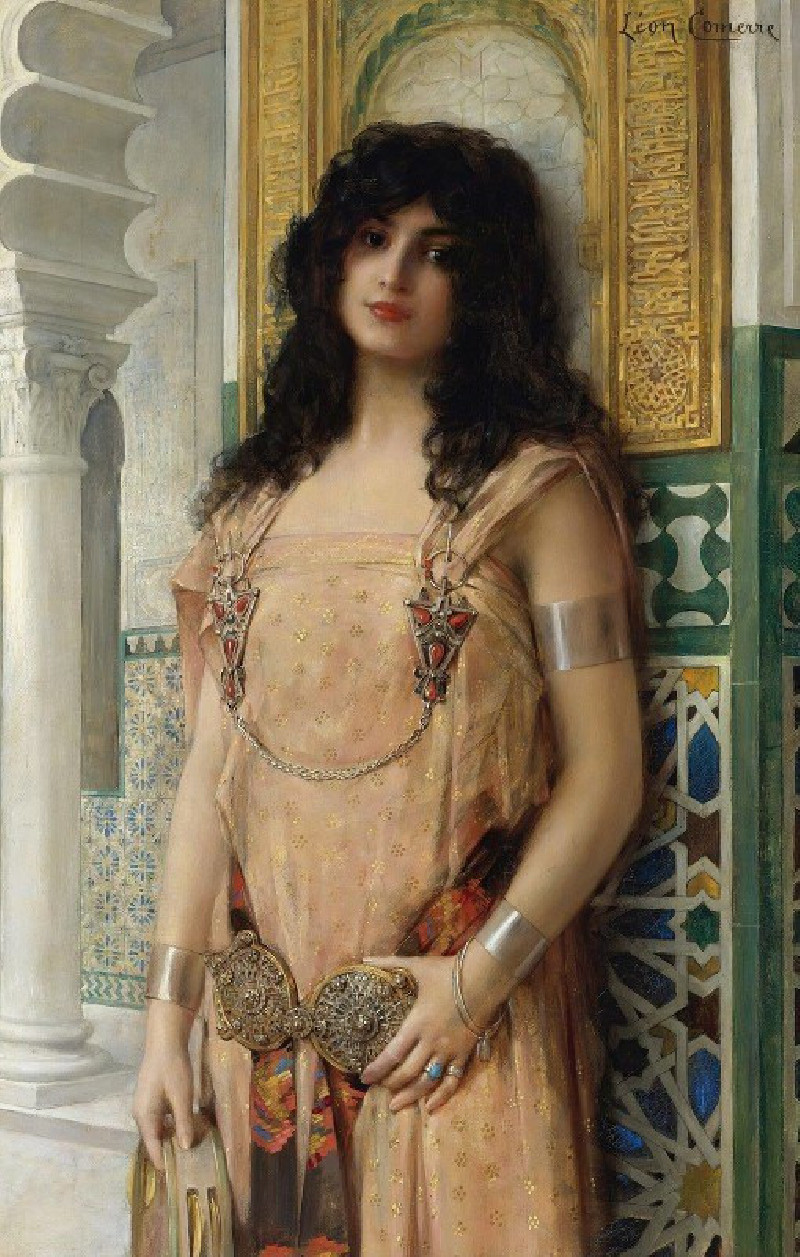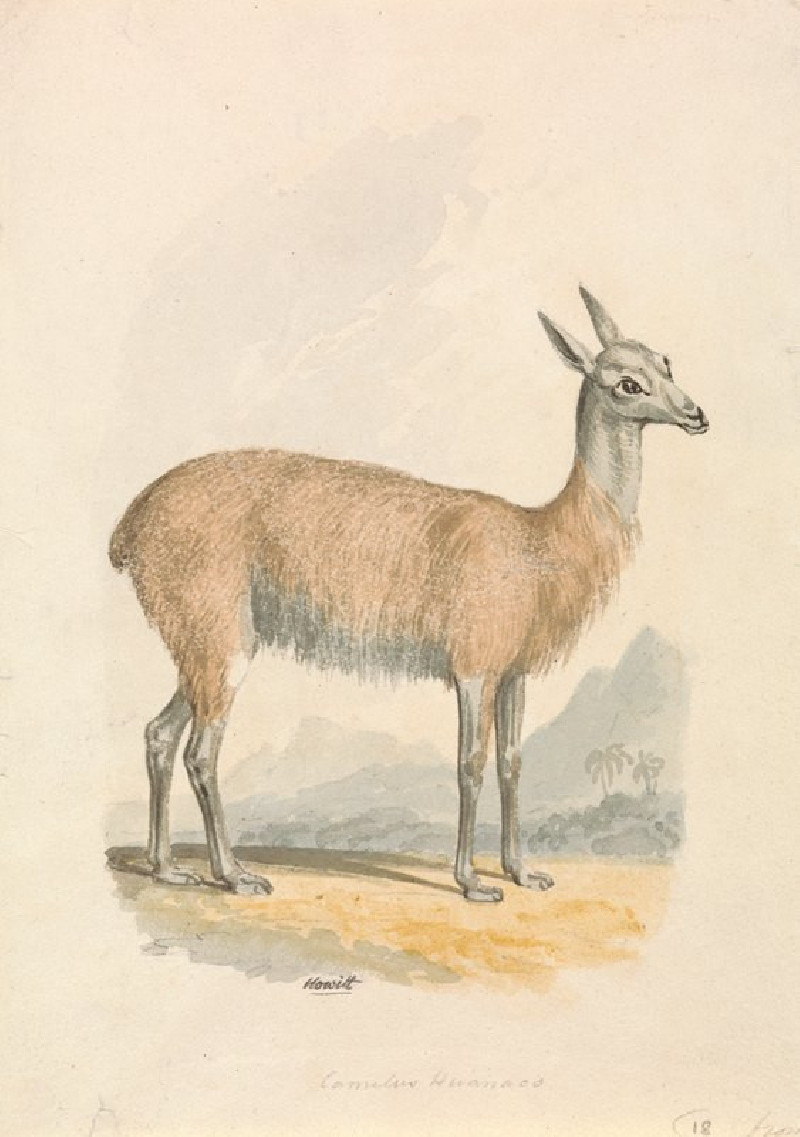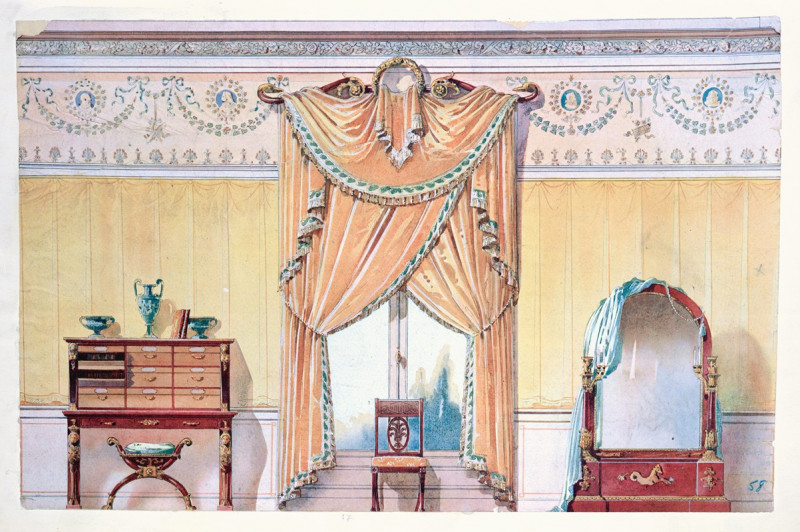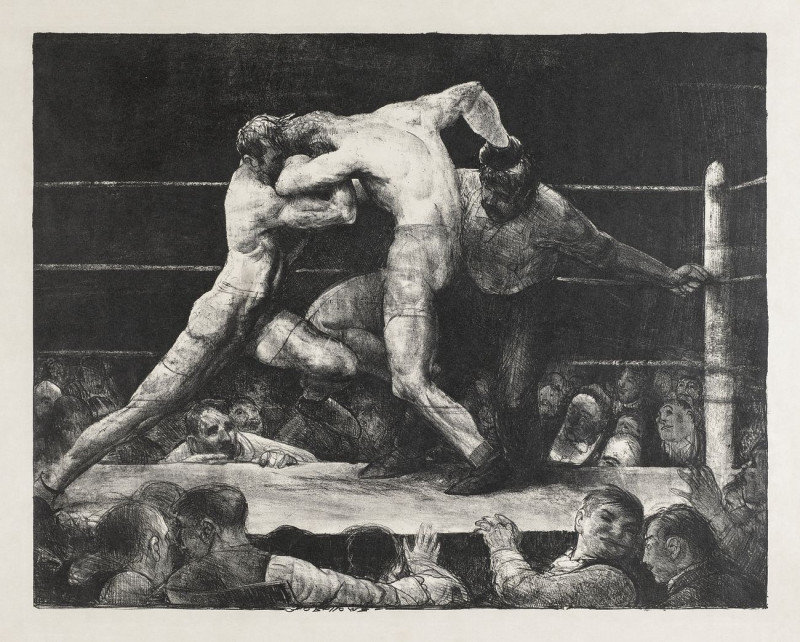Étude pour ‘La Moisson’ (1919)
Technique: Giclée quality print
Recommended by our customers
More about this artwork
Henri Martin's vibrant and emotive study for "La Moisson," painted in 1919, beautifully captures the essence of the harvest season, blending labor with the beauty of the French countryside’s natural landscapes. This preparatory work is a fascinating glimpse into Martin's larger compositional process, illustrating his mastery in portraying light and atmosphere.In "Étude pour ‘La Moisson’," the viewer encounters an intimate moment within the expansive task of harvesting. The painting features a single individual, bent over in the fields, vividly bringing to life the physical demands and rustic grace of agricultural work. The figure is depicted with a sense of movement that is almost palpable, their body arched in an enduring stance of work.Martin’s characteristic impressionistic touch is evident in the textured application of paint, creating a lively interplay of colors that seems to dance across the canvas. The background blurs into a mosaic of warm yellows, rich greens, and earthy browns, possibly hinting at the distant fields, trees, and possibly other workers or buildings, thus enveloping the central figure in a rich tapestry of natural hues.This painting not only underscores the artist’s fascination with rural themes but also showcases his exceptional ability to convey deep emotional and atmospheric effects with his unique brushwork and color palette.
Delivery
Returns
Henri-Jean Guillaume "Henri" Martin (5 August 1860 – 12 November 1943) was a French painter. Elected to the Académie des Beaux-Arts in 1917, he is known for his early 1920s work on the walls of the Salle de l'Assemblée générale, where the members of the Conseil d'État meet in the Palais-Royal in Paris. Other notable institutions that have featured his Post-Impressionist paintings in their halls through public procurement include the Élysée Palace, Sorbonne, Hôtel de Ville de Paris, Palais de Justice de Paris, as well as Capitole de Toulouse, although the Musée des Beaux-Arts de Bordeaux and Musée des Augustins also have sizeable public collections.

